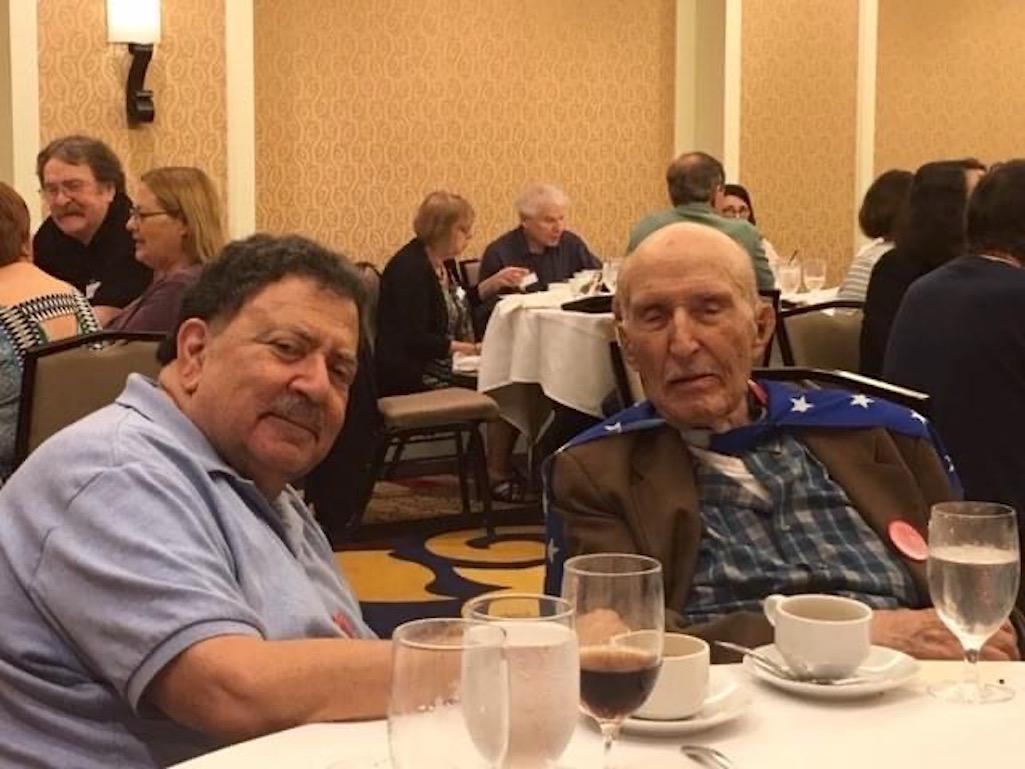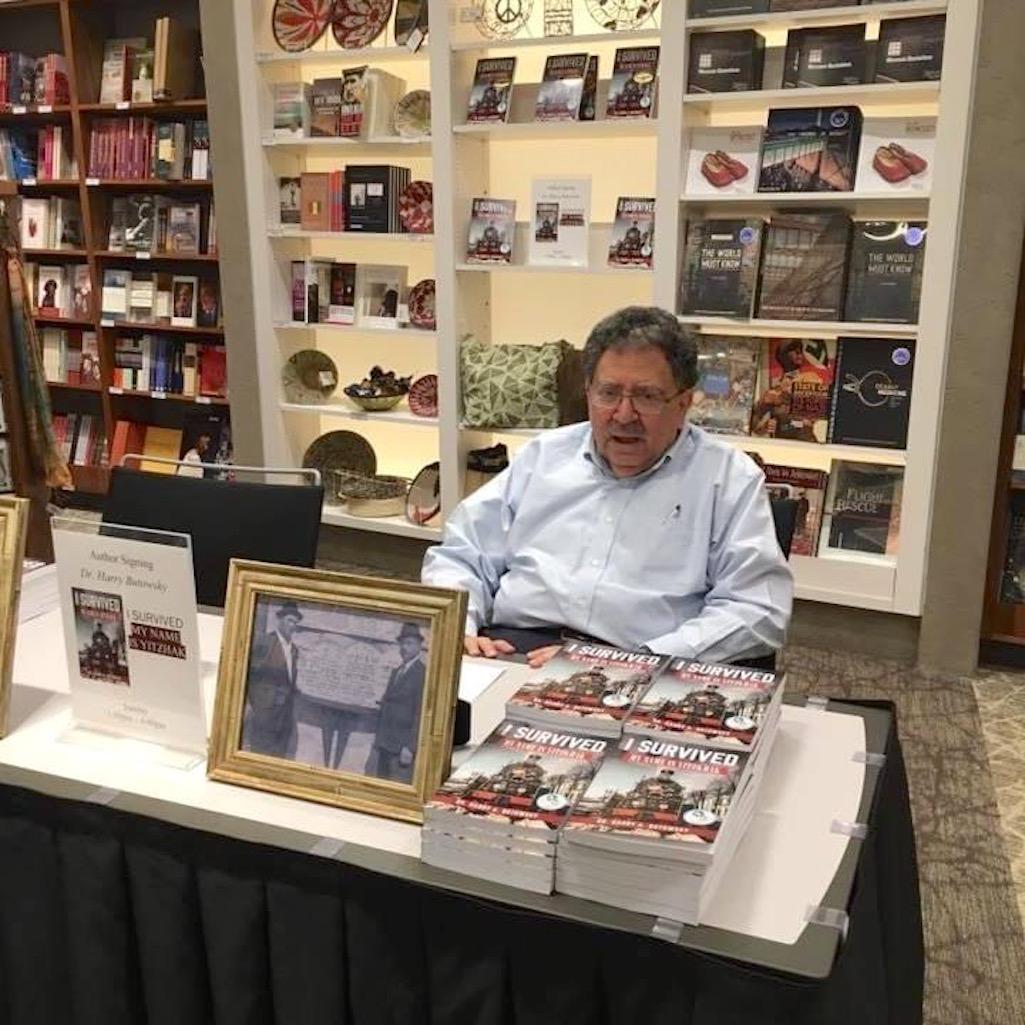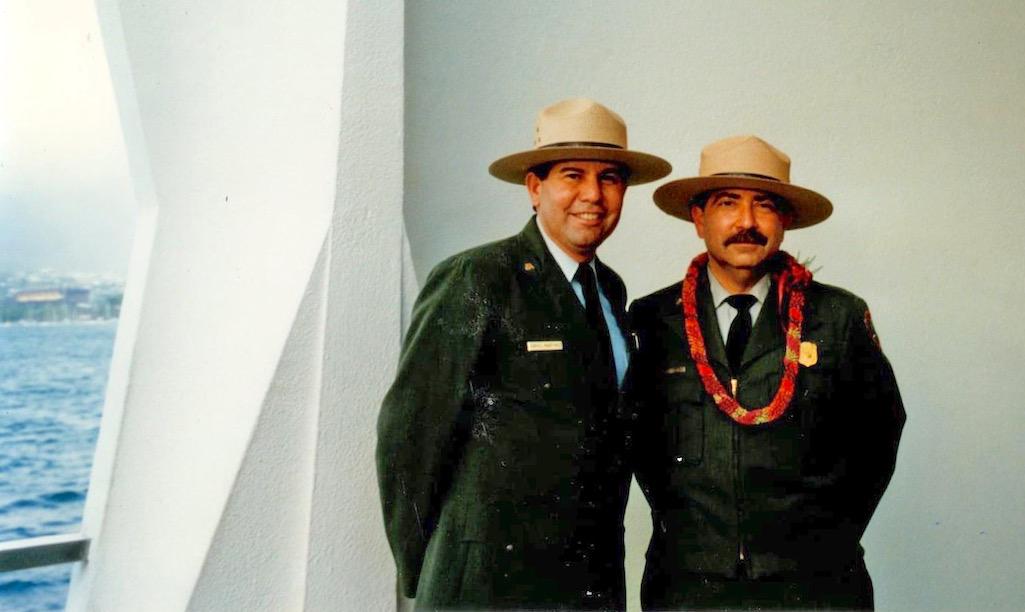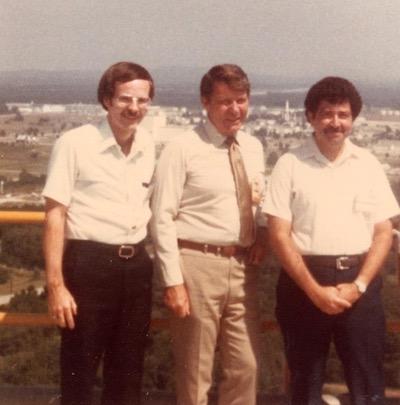Following an extended illness, Dr. Harry Butowsky, formerly with the National Park Service History Division, passed away May 6 at his home in Reston, Virginia. He was 78.
Until his retirement in 2012, Harry’s career spanned a remarkable 35 years devoted to saving and interpreting the nation’s past. No less remarkable, his love of history imbued his private life, notably a research website praised nationwide. Nor were his friends in the least surprised. The late Edwin C. Bearss, in a standout testimonial, credits Harry with the spirit needed to make the History Division a success.
In 1981, Bearss elaborated, as the Park Service recruited for the position of Chief Historian, “it remained empty, and I might never have made a move toward it if it hadn’t been for Harry Butowsky.” Himself but three years with the History Division at the time, Harry promised Bearss all the administrative help he needed. Moreover, it was a promise Harry kept. “Hire the best,” Bearss advised, and Harry never wavered, confident that excellent leaders come from pursuing excellence, and that Bearss would make the Division proud.

Edwin C Bearss (June 26, 1923 – September 15, 2020), takes a moment from his 96th birthday party in Arlington, Virginia, to reminisce with his dear friend and former colleague Harry Butowsky “To the practical historians of the National Park Service, stay in the field,” Bearss advised “Walk the ground and know it” Here were two that knew it well/Butowsky Family
.
It was only natural to think that, Harry responded modestly, having grown up in the shadow of World War II. Born August 5, 1944, in Philadelphia, the so-called World War II generation was everywhere present—and its values present, too. Personal accounts of the war moved him deeply. Only the day before his birth, Anne Frank was betrayed and captured in Amsterdam, Holland, then sent to Auschwitz before dying in Bergen-Belsen. Stories like that made history real. By high school, interspersed with working in his father’s store, Harry was reading widely in military history from the American Revolution to World War II.
On graduating from Central High School in West Philadelphia, he naturally picked history as his college major, earning his B.A. from Penn State University in 1966. Within a year he had his M.A. from the University of Illinois, and decided to stay on for a Ph.D. There he also met his bride, Lois, whom he married in 1971.
Inevitably, now juggling family life and graduate school, reality intervened, motivating his return east for a three-year appointment at Monmouth College (now University) in New Jersey. “I should have picked a simpler topic for my dissertation,” he later confessed. No doubt, further bogged down by books in German script, he had taken on an enormous load. Fortunately, his efforts did not go unnoticed. His dissertation, Leopold von Ranke and the Jewish Question, remains a critically important study speaking to the causes of World War II and the Holocaust, complementing, in addition to military history, Russian History, Jewish History, German History, the Holocaust, and the history of Eastern Europe.

Harry’s World War II history, I Survived: My Name is Yitzkhak (2015), brought immediate praise from the Holocaust Museum in Washington, DC, as an outstanding contribution to Jewish history. A frequent guest of the museum to speak and sign his book, Harry further relished meeting and talking to visitors. No doubt, before this day in the gift shop ended, Harry had either been talked out, or sold out, or both/Butowsky Family
No matter, after finishing his Ph.D. in 1975 Harry found his prospects bleak. “Like everyone else with a doctorate in history I thought I would continue to teach, but the economy had other ideas.” Monmouth College would advance to university status without him. His only choice was to apply wherever he heard the word history, and in 1977, to the Middle-Atlantic Regional Office of the National Park Service in Philadelphia. The opportunity there was to write, a remembered opportunity, as it turned out, leading to his first major Park Service study: “Appomattox Manor-City Point: A History.” It proved the stepping-stone that launched his career, allowing his transfer in 1978 to a permanent position with the History Division in Washington, D.C.
“I was so thankful to have a job in history,” he recalled. Best of all, it turned out to be a job he loved. The Chief Historian at the time, Harry W. Pfanz, was a military historian and combat veteran—as was Pfanz’s successor, Ed Bearss.
“The work was intense, but fun,” Harry recalled. “We knew we were doing important work.”
It is little wonder, on Pfanz’s retirement, that Harry threw his support to Bearss, a Marine veteran of the Pacific Theater in World War II. Pinned down by a Japanese machine gun on New Britain—“Suicide Creek,” as the battle was called—Bearss had survived four wounds and two years of convalescence. It forever sealed Harry’s respect for combat veterans, in his opinion heroes all.
His private histories were similarly inspired by what people in the war had overcome. His last book, I Survived: My Name is Yitzkhak (2015), tells the story of Yitzkhak Neiman, a Polish Jew. After surviving the collapse of the Polish army in 1939, Yitzkhak escaped east, and by 1942, his cunning tested to the limit, was serving in the Russian army. It was a post no less fraught with danger and still little chance of surviving the war.
Of course, most of Europe’s Jews did not survive, including most of Yitzkhak’s family, making his story all the more valuable to historians. Harry was especially proud, having personally intervened to save and chronicle it, of his standing invitation from the Holocaust Museum in downtown Washington to give talks and sign copies of the book for visitors. As an added tribute, in 2016 fellow historians and academics named it the best biography of the year by a small independent publisher.

In one of his proudest moments, Harry (right) was invited to be the guest speaker on Memorial Day, 1995, at the USS Arizona Memorial in Pearl Harbor, Hawaii. It proved one of several such invitations. He is flanked by Chief Historian Daniel Martinez, with all due credit to Harry’s research, undoubtedly the most recognized media expert on the attack of December 7, 1941/Butowsky Family
Harry’s favorite Park Service studies included his four-volume history of the Man in Space Program, a study of Pacific Theater warships in World War II, and the U.S. Constitution, the latter of which, along with his advocacy, led to the establishment of Brown v. Board of Education National Historical Park. Known as Landmark Theme Studies, Harry did six in all while contributing to several others.
It stands as an amazing record, given the amount of research involved, to say nothing of the time needed for writing. “Ed Bearss allowed us just six months per volume, but we did it.” Nor did anyone in the office—least of all Harry—complain.
He still missed teaching, and to everyone’s amazement, also found time for that throughout his tenure in Washington, retiring in 2018 from George Mason University as adjunct professor, a record totaling 38 years. His principal courses on World War II were both fully subscribed and taught with distinction, his students confirmed. “Of course, I piqued their interest by inviting veterans to speak," Harry said. "How could they not like classes that made history come alive?”
Even then, Harry had saved the best for last. Retirement? What retirement? His one disappointment, citing budgetary constraints, was that the Park Service had never seemed to want the NPS History eLibrary website he had created and managed. Now he could devote his time to a private website. Thus was born http://npshistory.com, containing, in his words, “upwards of 50,000 NPS reports, individual park reports, nature notes, magazine runs, pamphlets, brochures, and books that are now available for anyone to use free of charge. It is by far the largest private website for NPS material and is used by NPS personnel, college professors, students, and the general public, averaging 130,000 unique visitors a month.” The national parks of Canada are similarly covered.

Mercury astronaut Walley Shirra (second from left) welcomed Harry (right) and his team to Cape Canaveral, Florida, as part of Harry’s Man in Space study. In the early 1980s, preservation of the Cape Canaveral complex and Saturn V rocket (Apollo Program) consumed much of Harry’s time/Butowsky Family
Harry’s co-founder on the site, Randy Payne, minces no words: “It is an incredible legacy—beyond imagining, really. Who would have thought, on being told no by the Park Service, that Harry would persevere?” Another of his favorite pastimes, writing for the National Parks Traveler, promised to “keep me on my toes,” as he put it. By that, he meant still more articles upholding the qualities of the National Park System and how it should be managed.
Harry is survived by his wife Lois (Jacobs) of 51 years, son Edward, and daughter Karen, two grand cats, Neptune & Luna, and countless friends, students, and grateful colleagues, who yes, use his website every day.
Harry was preceded in death by his father Edward, mother Nettie, sister Frances, a baby son, many beloved aunts, uncles, cousins, and friends. Among colleagues, he would reserve special mention for Ed Bearss, Bob Utley, Harry Pfanz, Dick Sellars, Ted Sudia, and Gordon Chappell.
Rest in peace, Harry. As the plaque honoring Stephen T. Mather reads, there will never come an end to the good that you have done. Mather helped found the National Park Service; you and your colleagues ensured it would last, and we do hope, further honoring your wishes, that all of you are together again.



Comments
The NPS History eLibrary was the National Park Service's first electronic library, with its first document uploaded in December 1999: The Origin and Evolution of the National Military Park Idea by Ronald F. Lee (1973) followed by The United States Park Police: A History by Barry Mackintosh (1989) and A Brief History of the National Park Service by James F. Kieley (1940). At the time, the NPS Web presence was a single Web page for each park (known as a 17-point page), and yet Harry was already making entire documents accessible to a growing Web community. The Internet Archive was only 3 years old; HathiTrust wouldn't be launched until 9 years later. But Harry foresaw that the World Wide Web was a coming thing, and as he wrote for an article in The George Wright Forum (2010): "...information must be available and easy to access for all of our employees and the public at large. ... The National Park Service will not be fully engaged with the modern age until we organize and make our vast library of information available to our employees and the public." The George Wright Society formally recognized Harry's efforts to make Park Service information electronically accessible by awarding him their Communication Award in 2007. While his efforts to build the NPS History eLibrary was not always embraced by his superiors, his determination was unwavering in trying to make the vast store of NPS literature easily accessible to both his fellow employees, but also to the general public. NPSHistory.com continues to build upon what began in 1999 and we all have Harry to thank for his vision and commitment in making that happen.
Harry played a key role in helping to establish Brown v. Board of Education NHS (now NHP) in 1992. That path started with his authoring of The U.S. Constitution: A National Historic Landmark Theme Study (1986). As Harry wrote in a special edition of CRM (Vol. 19 No. 2) in 1996:
Harry's side gig was teaching World War II history at George Mason University (his favorite course), along with World War I history and Western Civilization (his least favorite; by the time he got to lecturing about Pliny the Elder he had pretty much weeded out from the class those who genuinely had zero interest in World history -- come on, who wouldn't be interested in learning about a guy who famously said: "Truth comes out in wine" and "Home is where the heart is"?) A couple of his former students commented: "Dr. Butowsky is the best professor I have ever had at Mason. Do not miss a chance to take one of his classes" and "He is passionate about the history of World War II and a great teacher. It was a pleasure coming to his class every week."
Harry knew his history backwards and forwards. Ask him a simple question about the Opana Radar Site and an hour later he'll have given you the complete story right down to the serial no. of the radar antenna -- OK, a bit of an exaggeration on that last part, but the bottom line is: he knew his stuff and it came natural for him to want to share and educate others about a myriad of historical topics.
Harry was surrounded by really sharp people, which kept him on his toes. One such person he spoke often about was his conversations with Ted Sudia -- NPS Chief Scientist and co-founder of The George Wright Society. Harry felt strongly that Ted should have been chosen as NPS Director and that Ted's insights would have equalled that of Mather and Albright. Ted also created the Institute for domestic Tranquility (IdT) and Harry asked that I preserve the We the People letters which Ted wrote (1986-1993) which can still be found on the Internet Archives' Wayback Machine: https://web.archive.org/web/20040614011136/http://www.idt.org/
I remember stopping by his desk a number of times when I worked in Washington and there was always a stack of books piled nearby, almost as tall as me, waiting to be converted to the eLibrary.